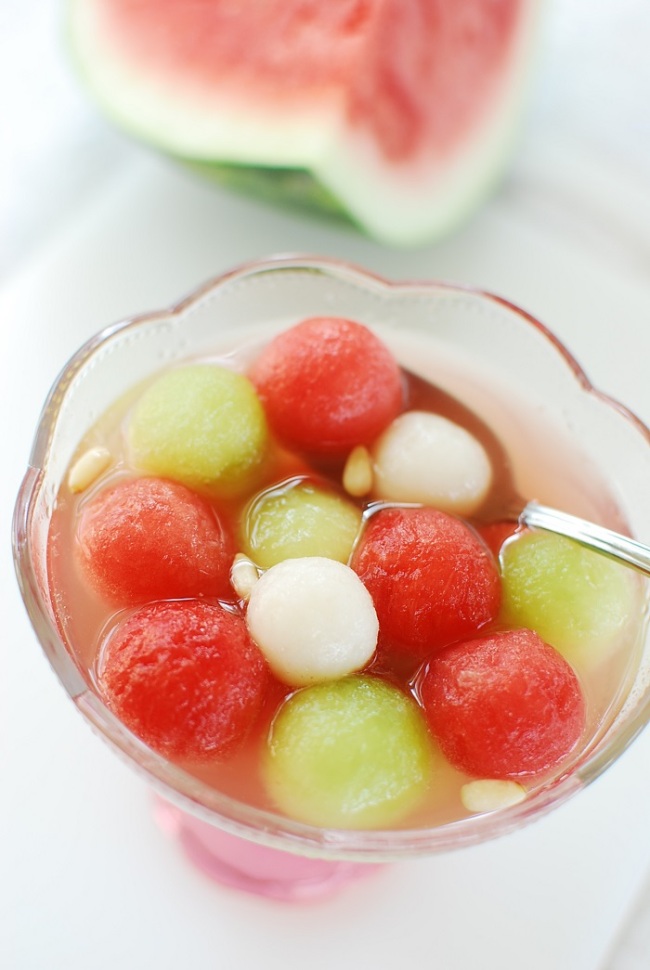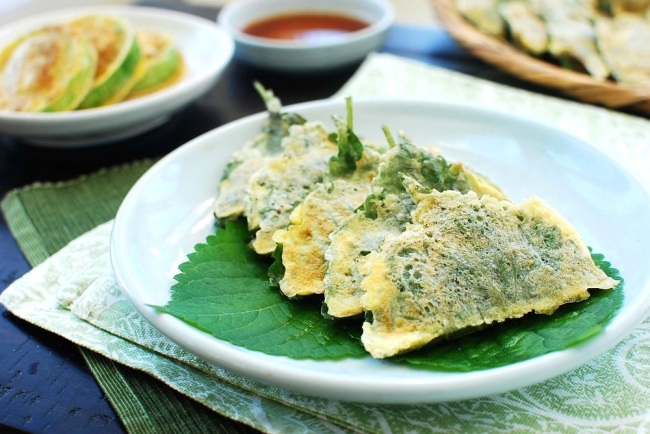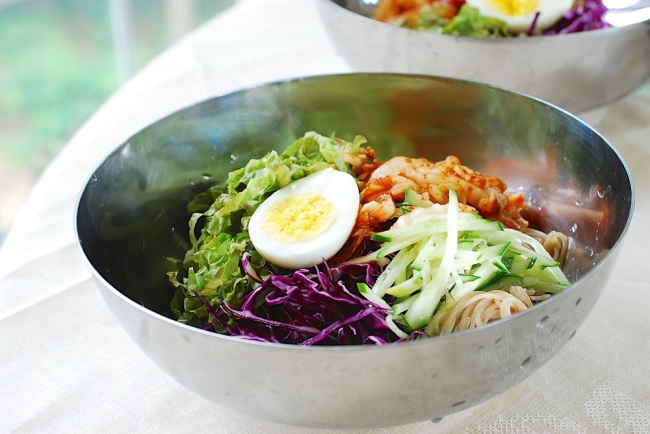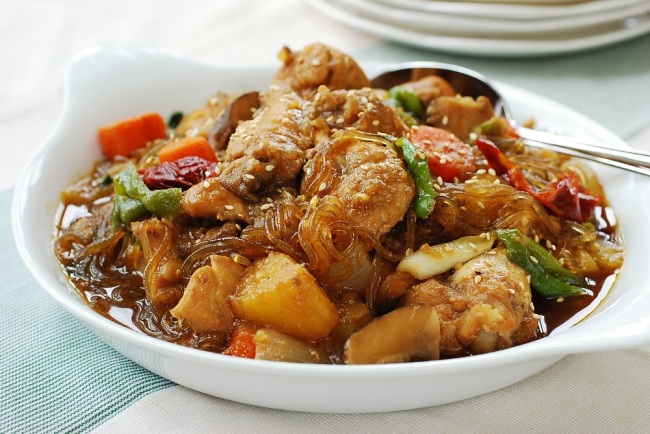 |
| Hwachae (Korean traditional fruit punch) (Korean Bapsang) |
4 servings
Ingredients:
● about 2 cups watermelon, balled or cubed
● about 1 1/2 cups honeydew, balled or cubed
● 2 cups ginger ale
● 3 tablespoons Korean drinking vinegar (or pomegranate or cranberry juice)
● pine nuts for garnish ― optional
12-16 rice cake balls (gyeongdan) ― optional (Recipe follows.)
Make the optional rice cake balls as shown below.
Scoop out watermelon and honeydew with a melon-baller. (Or, cut into about bite size cubes.) Place them in a large bowl along with any juice from the fruit.
Add the ginger ale and the drinking vinegar (or pomegranate or cranberry juice) to the fruits. Stir gently. Taste the drink and adjust acidity or sweetness by adding more drinking vinegar (or juice) or sugar.
Simple rice cake balls:
● 1/2 cup sweet/glutinous rice powder, chapssal garu
● 2 teaspoons sugar
● pinch of salt
● 4 tablespoons boiling hot water
Mix the rice powder, sugar and salt in a bowl. Mix in the boiling hot water with a spoon. When cool enough to handle, knead by hand until a dough is formed.
Shape the dough into a 2-centimeter thick cylinder. Cut into (or pinch off) about 2-centimeter pieces. Roll each piece between the palms to make a small ball.
Bring a pot of water to a boil. Add the rice cake balls. Cook until all the balls float. Transfer to a large bowl with cold water to cool. Drain.






